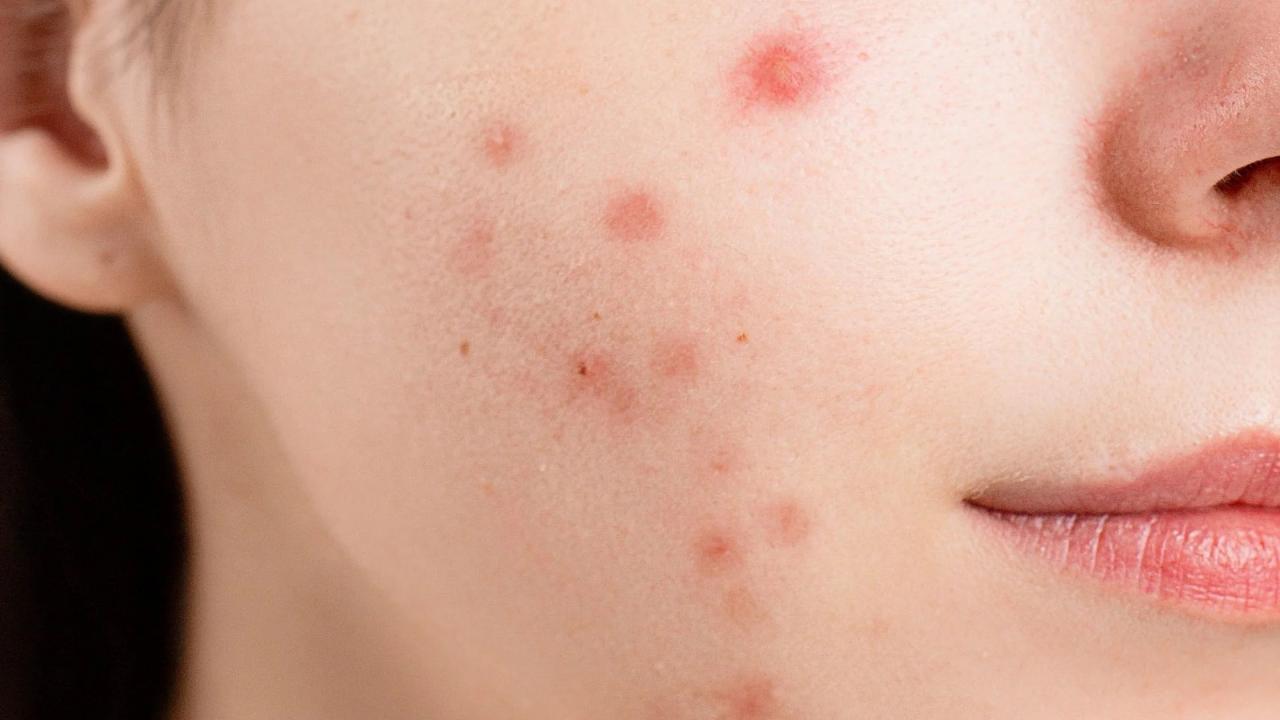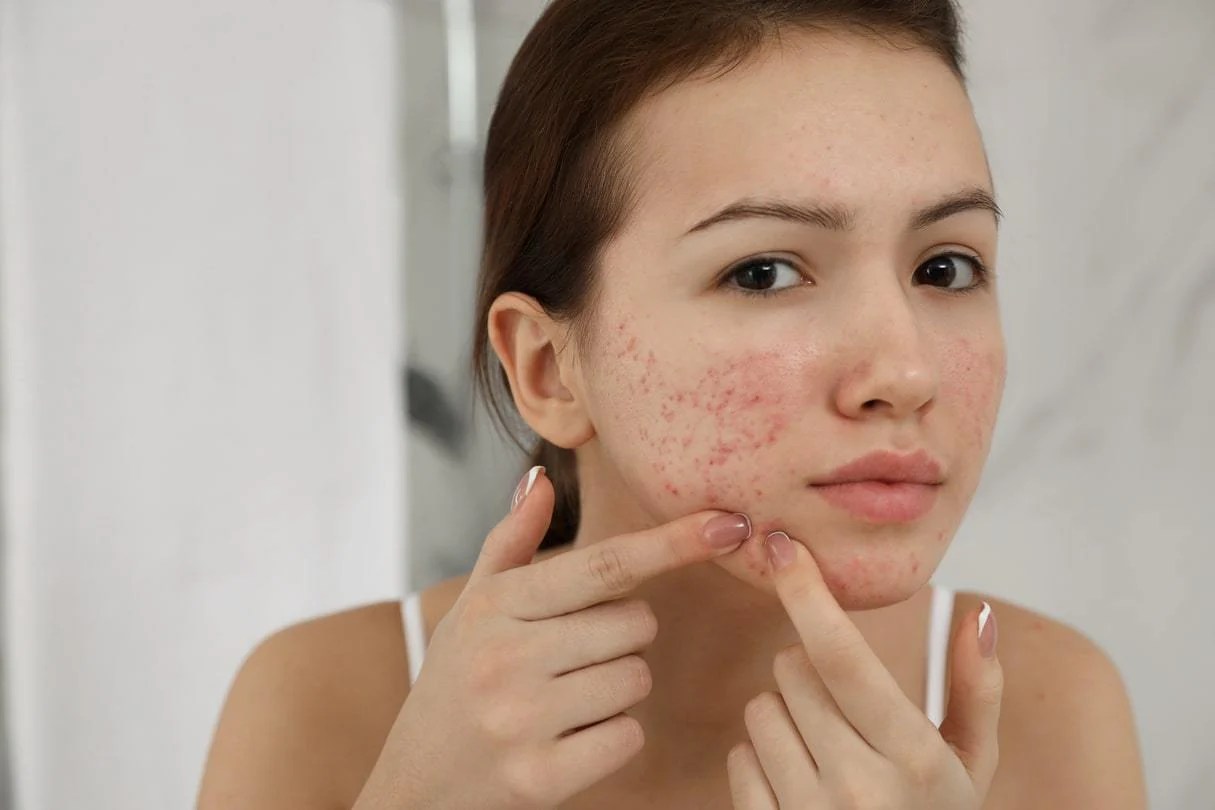Korean skincare routine for acne skin – Embark on a journey to flawless skin with the Korean skincare routine for acne-prone skin. This comprehensive guide unravels the secrets of Korean beauty, providing a step-by-step approach to combat acne, reduce inflammation, and achieve a radiant, blemish-free complexion.
Korean skincare emphasizes a gentle, multi-step approach that focuses on hydration, exfoliation, and targeted treatment. By following this routine, you can effectively address the unique challenges of acne-prone skin, leaving it soothed, balanced, and glowing.
Double Cleansing Method

Double cleansing is a crucial step in any skincare routine, especially for acne-prone skin. It involves using two different cleansers to remove dirt, oil, and makeup effectively, ensuring your skin is thoroughly cleansed without stripping it of its natural oils.
The first step is to use an oil-based cleanser to dissolve makeup and sunscreen. Oil-based cleansers are gentle and effective in removing impurities without drying out the skin. The second step involves using a water-based cleanser to remove any remaining dirt or impurities and balance the skin’s pH levels.
Suitable Cleansers for Acne-Prone Skin
- Oil-based cleansers:Look for cleansers containing natural oils such as jojoba oil, coconut oil, or olive oil, which are gentle and non-comedogenic (won’t clog pores).
- Water-based cleansers:Choose cleansers with salicylic acid, glycolic acid, or benzoyl peroxide, which help exfoliate and unclog pores, reducing acne breakouts.
Exfoliation
Exfoliation is an essential step in any skincare routine, especially for acne-prone skin. It helps remove dead skin cells, dirt, and oil that can clog pores and lead to breakouts. Exfoliation also promotes cell turnover, which can help improve the appearance of acne scars.
There are two main types of exfoliation: physical and chemical. Physical exfoliation uses a physical scrub to remove dead skin cells, while chemical exfoliation uses acids to dissolve them. Both methods can be effective for acne-prone skin, but it is important to choose a product that is gentle and non-abrasive.
Physical Exfoliation
Physical exfoliation is a great way to remove dead skin cells and dirt from the surface of the skin. However, it is important to use a gentle scrub that will not irritate the skin. Some good options for physical exfoliators include:
- Cleansing brushes: These brushes can be used with your favorite cleanser to gently remove dead skin cells.
- Exfoliating gloves: These gloves are made with a rough texture that helps to remove dead skin cells.
- Exfoliating sponges: These sponges are made with a soft texture that is gentle on the skin.
Chemical Exfoliation
Chemical exfoliation is a great way to remove dead skin cells and dirt from the deeper layers of the skin. However, it is important to use a product that is gentle and non-abrasive. Some good options for chemical exfoliators include:
- Alpha hydroxy acids (AHAs): AHAs are a type of acid that is found in many fruits and vegetables. They are effective at removing dead skin cells and improving the appearance of acne scars.
- Beta hydroxy acids (BHAs): BHAs are a type of acid that is found in willow bark and tea tree oil. They are effective at removing dead skin cells and reducing inflammation.
Hydration
For acne-prone skin, hydration is paramount. Dehydration can disrupt the skin’s natural barrier, making it more susceptible to acne breakouts. Dehydrated skin produces excess oil to compensate for the lack of moisture, which can clog pores and lead to breakouts.
Hydrating Ingredients
- Hyaluronic acid:A humectant that draws moisture into the skin and helps retain it.
- Ceramides:Lipids that help repair and strengthen the skin’s barrier, preventing moisture loss.
- Glycerin:A humectant that helps attract and retain moisture.
- Aloe vera:A soothing and hydrating ingredient that helps reduce inflammation and redness.
- Green tea extract:Contains antioxidants that help protect the skin from damage and inflammation.
Acne-Fighting Ingredients: Korean Skincare Routine For Acne Skin
In the battle against acne, certain ingredients have proven to be formidable allies. These acne-fighting powerhouses not only combat the bacteria that cause blemishes but also help to reduce inflammation and prevent future breakouts.
Salicylic Acid
Salicylic acid, a beta-hydroxy acid (BHA), is an effective exfoliant that penetrates deep into pores to remove excess oil, dead skin cells, and bacteria. Its anti-inflammatory properties help to reduce redness and swelling associated with acne.
Example products:Paula’s Choice 2% BHA Liquid Exfoliant, COSRX BHA Blackhead Power Liquid
Benzoyl Peroxide
Benzoyl peroxide is a powerful antibacterial agent that kills the bacteria that cause acne. It also helps to reduce inflammation and prevent new breakouts from forming.
Example products:Neutrogena Rapid Clear Stubborn Acne Spot Treatment, Differin Gel
Tea Tree Oil
Tea tree oil is a natural antiseptic and anti-inflammatory agent that helps to kill bacteria and reduce redness and swelling. It is also known to help prevent scarring.
Unveiling the secrets of flawless skin, face reality skincare hydrabalance hydrating gel emerges as a beacon of hydration. As we explore the skincare landscape, we delve into the nuances of japanese vs korean skincare , unraveling the intricacies of each culture’s approach to skin rejuvenation.
Embarking on a journey to the heart of skincare, we uncover the best french skincare products , renowned for their luxurious textures and transformative results. Understanding the essence of skincare, we delve into que es skincare , grasping the fundamental principles that govern this transformative practice.
Example products:The Body Shop Tea Tree Oil, Melaleuca Alternifolia Leaf Oil
Sun Protection
Sun protection is crucial for acne-prone skin, as sun exposure can exacerbate breakouts. The sun’s ultraviolet (UV) rays stimulate the production of sebum, an oily substance that can clog pores and lead to acne. Additionally, UV rays can damage the skin’s barrier, making it more susceptible to bacteria and inflammation.
Sunscreen Recommendations, Korean skincare routine for acne skin
For acne-prone skin, choose a sunscreen that is:* Non-comedogenic (does not clog pores)
Indulge in the hydrating embrace of face reality skincare hydrabalance hydrating gel for a dewy, radiant complexion. Embark on a skincare journey that unveils the secrets of japanese vs korean skincare , exploring the delicate balance of ingredients and rituals that define each culture’s approach.
Immerse yourself in the luxurious world of best french skincare products , where elegance and efficacy intertwine to reveal the timeless beauty of French skincare expertise. Discover the essence of que es skincare , unraveling the science behind the art of nurturing and preserving your skin’s youthful radiance.
- Oil-free
- Broad-spectrum (protects against both UVA and UVB rays)
- SPF 30 or higher
Recommended sunscreens for acne-prone skin include:* EltaMD UV Clear Broad-Spectrum SPF 46
- CeraVe Facial Moisturizing Lotion with Sunscreen SPF 30
- La Roche-Posay Anthelios Mineral Sunscreen SPF 50
- Paula’s Choice RESIST Super-Light Daily Wrinkle Defense SPF 30
Apply sunscreen liberally to the face, neck, and any other exposed areas 15 minutes before sun exposure and reapply every two hours or more often if swimming or sweating.
Closing Summary

Incorporating the Korean skincare routine for acne-prone skin into your daily regimen can transform your complexion. By following the steps Artikeld in this guide, you can effectively cleanse, exfoliate, hydrate, and treat your skin, resulting in a noticeable reduction in acne breakouts and a radiant, healthy glow.
Embrace the power of Korean beauty and witness the transformative results for yourself.
Helpful Answers
Q: How often should I double cleanse my face?
A: Double cleansing is recommended twice a day, once in the morning and once in the evening.
Q: What is the best way to exfoliate acne-prone skin?
A: Choose gentle, chemical exfoliants over physical scrubs to avoid irritation. Exfoliate 1-2 times per week.
Q: Can I use the Korean skincare routine if I have sensitive skin?
A: Yes, many Korean skincare products are formulated for sensitive skin types. Look for products labeled “hypoallergenic” or “for sensitive skin.”





Leave a Reply